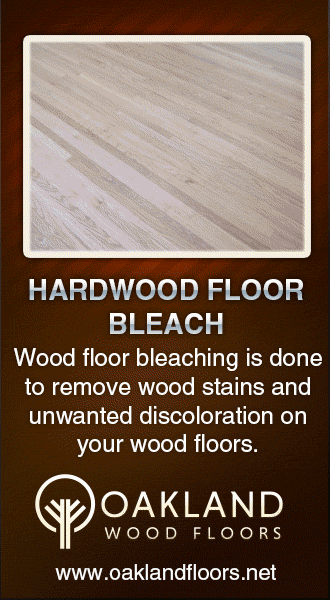When it comes to installing wood floors, there are a lot of decisions to be made. One such decision is choosing the cut of wood. There are three usual cuts of wood: plain sawn, quarter sawn and rift sawn. The angle at which the board is sawn from the log creates the style of cut. Each cut produces boards of a different appearance and quality.
The most common cut is plain sawn. The log is squared and sawed lengthwise in a series of parallel cuts. The annual growth rings appear as approximately straight lines on the board, joining at the end to form a “cathedral arch.” Because of this arch, plain sawn boards are often considered the most beautiful of the cuts. These boards are ideal for large visual areas like whole floors, tabletops, drawer fronts, sides of dressers or other similar projects. Plain sawn boards are the least expensive of the three cuts as they are the least labor-intensive to produce and leave the least waste.
The wide boards produced by this cutting method make it attractive for flooring. These boards do well for relatively low traffic areas of flooring. You might also choose plain sawn boards for step risers where their attractiveness and stability across the width would be used to advantage.
Another cut is quarter sawn. Quarter sawn boards are created by first cutting a log into quarters and then making a series of parallel cuts perpendicular to the tree's rings, cutting on the radius. The grain in quarter-sawn wood is relatively consistent, and so the boards are easier to match for a uniform appearance. This also makes quarter-sawn boards less likely to bow, warp or twist than plain sawn. Because of this trait, woodworkers seeking a seamless look in their crafts often prefer these boards. A quarter-sawn floor will be stable, strong, last indefinitely and not produce slivers easily. This makes it a good choice for floors being placed in high traffic areas.
Quarter sawing produces narrow boards. As the board yield per log is not as substantial as with plain sawing, quarter sawn boards cost more than plain sawn. However, they cost less than rift-sawn boards.
The final cut is rift sawn. In this cutting method, the log is quartered, and then cut at about 45 degrees. As each board has an identical relation to the log, each board from that log will have the same grain pattern. This makes it easy to match boards for a uniform appearance. Because of its uniform grain, rift sawn is the most stable of the cuts.
Rift sawing produces a low yield of boards per log and leaves many wedge-shaped scraps. Because of the low yield and waste, rift sawn wood is hard to find and very expensive when you do find it.
Ultimately, when choosing the cut of the boards in your wood floor, choosing between plain sawn and quarter sawn is going to give you the best result.
Wood floor Cuts
Copyright ©
2007 - 2026
Oakland Wood Floors



